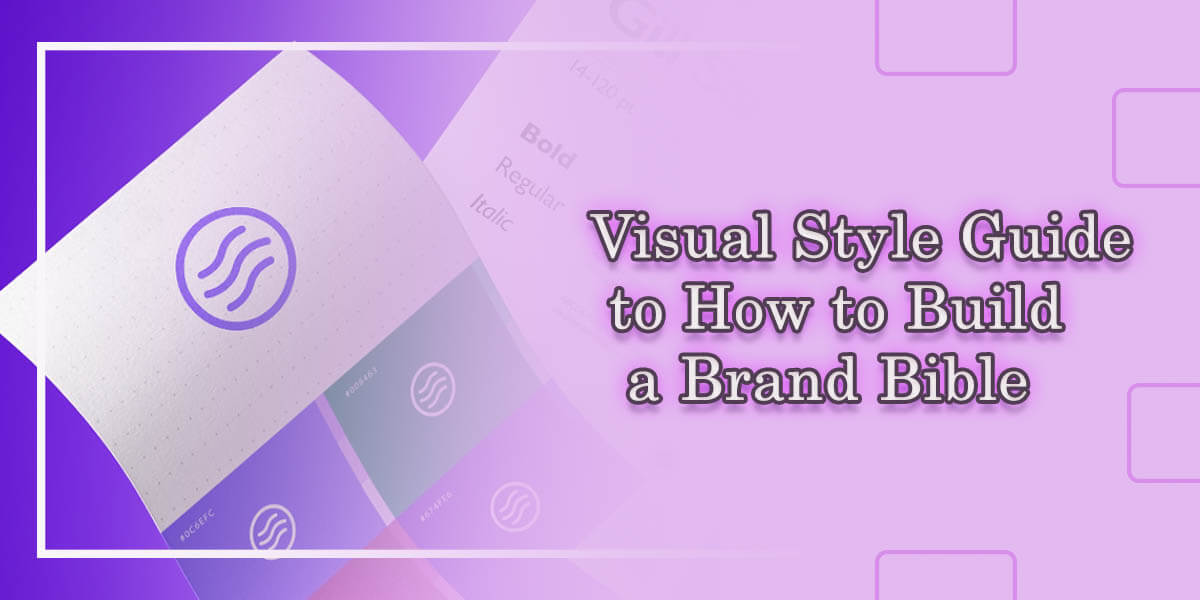Creating a brand is not a very complex task to do but managing it, marketing and adding visual essence to it is the real work. Most of the brands and companies get flopped because of the weak brand strategies, and improper guidelines. There is no proper way to represent your brand, and there is not enough engagement.
The brand bible is a complete set of guidelines and rules to empower your business with the help of proper branding, logo, visual elements, and managing all the social media platforms. You will get a proper company guideline and engagement strategies to build your brand’s credibility. These guidelines are really important to align all the brand partners for the recognition of your company.
In this article, we are going to give you a detailed guide on Brand Bible. You will get to know what it is, how it works, what the benefits of using it are, and how it boosts your brand and its credibility over time. To know everything about it, read this article till the end.
Some key Benefits of a Brand Bible
They maintain brand integrity and coherence across all marketing efforts by outlining style rules. It prevents disjointed campaigns. Educate new and current employees on your brand positioning and values to ensure they properly represent your company. Providing guidelines to external vendors and partners to guarantee brand standards are followed in their work.
You serve as a historical record of your visual identity changes and brand evolution journey, clarifying any ambiguities to avoid brand misrepresentation. Detailed guidelines leave no room for misinterpretation. Now that we understand the purpose and value let’s explore the essential components that every brand bible should include. The level of detail may vary depending on your business size and complexity, but the following sections are universally important.
Brand Positioning

Your positioning statement lays the foundation. Be specific yet encompassing. For example, a tech company may say, “We empower small businesses to digitize operations through affordable and easy-to-use software.”
Elaborate further by explaining target customers and their pain points. For the above example, the target may be businesses with 5-50 employees struggling with outdated manual processes. Clarify how your solutions specifically address those challenges.
Brand Personality
Personality reflects your company’s unique attitude and spirit. Common traits include innovation, reliability, fun, and sophistication. Consider your values and vision when defining this. For a “fun yet reliable personality, ” emphasize qualities like playfulness, colour, and lightheartedness in visuals and tone. But also project trustworthiness through consistency and clarity in messaging.
Brand Voice
Your voice is the expression of personality. For a fun brand, the voice may be casual yet articulate. Focus on word choice – use everyday language instead of jargon. For tone, emphasize enthusiasm through exclamation points strategically. But maintain credibility with facts, not hyperbole. Test different voices to pick the right fit.
Logo Guidelines

Include logo usage rules covering colour variations, minimum sizes, exclusion zones, and common mistakes to avoid. Provide logos in all applicable file formats for partner access.
Color Palette
List Pantone numbers and hex codes. Include variations like 10-20% tints to use judiciously. Consider accessibility – ensure sufficient colour contrast for all.
Typography
Outline primary and secondary fonts. Specify uses like headers in Arial vs body in Times New Roman. Provide font samples and instructions on where to source them.
Imagery Style Guide

Describe your visual aesthetic. For a vintage brand, suggest faded, grainy photos. Or illustrate modern with clean lines and solid colours. Proper models maintain consistency.
Tone of Writing
Describe the writing style aligned to your voice. For a casual tone, allow contractions and emphasize storytelling. But maintain an educational aspect with well-researched facts.
Customer Experience
Map customer journeys across channels like websites and stores. Highlight brand touchpoints and prescribed experiences—for example, welcoming store ambience and helpful staff.
Social Media Best Practices
Provide posting schedules, types of content like photos vs videos, and engagement best practices. Optimize different platforms – tweets may be casual, but Facebook is more personal.
Working with Partners Brand Bible
Outline processes for requesting approvals, accessing assets through a portal, project management practices, and quality expectations. Provide templates and resources.
Measuring Success

Suggest metrics like website traffic, social following growth, and customer satisfaction scores—benchmark targets to track brand health. Qualitative measures, such as customer feedback and employee surveys, also help.
Read More: Exploring the World of Learning and Play with HighlightsKids
Keeping it Updated
Schedule routine reviews and interim updates. Appoint stakeholders as caretakers—version and date documents. Socialize changes appropriately through updated training modules.
Proper Implementation
Train employees extensively on guidelines. Make assets accessible through a centralized hub. Monitor usage and provide feedback. Appoint brand champions within teams.
Providing examples where possible and avoiding jargon makes the guidelines easy to understand and implement consistently. With the above comprehensive sections, your brand bible becomes a one-stop reference for all identity needs.
Proper socialization of the brand bible within your organization is essential. Share it widely, conduct brand training sessions, and make assets easily accessible. Appointing a brand manager or governance team helps oversee usage and approvals. You may also brand-enable commonly used apps or create a brand intranet page for easy access.
Periodic audits keep the brand bible relevant as your company grows. Revisit positioning, conduct stakeholder interviews, and analyze the latest creatives for opportunities to refine guidelines. Capture learnings, update sections and obtain approvals for changes. Consistent usage over time strengthens top-of-mind recall for your customers, too.
Designing Effective Assets
Include design templates and brand blocks to simplify asset creation. For example, provide logo variations, colour swatches, font samples, photo styles and branded templates in standard file formats.
Brand templates in tools like Canva, Photoshop, and InDesign allow for the reuse of existing elements, ensuring visual consistency. Consider creating social media kit templates with optimized image sizes and captions.
Standardizing branded email templates, letterheads, presentations, and other collateral saves time and reduces errors. For websites, provide style tiles, modules and components following your design system.
Partner Collaboration Best Practices of Brand Bible
Outline transparent processes for collaborating with agencies and freelancers. Share asset libraries through branded portals with usage guidelines. Project management practices like status updates, approval workflows and quality checkpoints minimize revisions. Centralize feedback to log learnings.
Suggest using project management and file-sharing tools to streamline collaboration. For example, I use Asana for task management, Dropbox for file exchanges, and Slack for communication.
Onboarding partners on brand values through orientation modules helps internalize guidelines. Recognize exemplary work to encourage adherence. Addressing issues promptly builds trust for open collaboration.
Providing ready assets and templates simplifies creation for all teams. Process standardization and technology leverage efficiency. Proper partner management ensures brand consistency beyond internal teams. Together, these practices maximize the impact of your brand investment.
The Elements your Brand Bible must have
- Some specific statements, taglines, slogans and quick phrases for the representation of your brand.
- A complete guideline to build an interesting and attractive logo for your brand.
- Use your company’s visual elements to present your style.
- Branding your business through your style on social media platforms.
Summary
In summary, a well-crafted brand bible is your company’s style guide by documenting the visual and verbal elements representing your brand identity. With the right level of detail, examples and socialization it helps ensure consistency across touchpoints to build credibility and recognition over time. Regular reviews keep the brand bible relevant as your company’s needs evolve.




